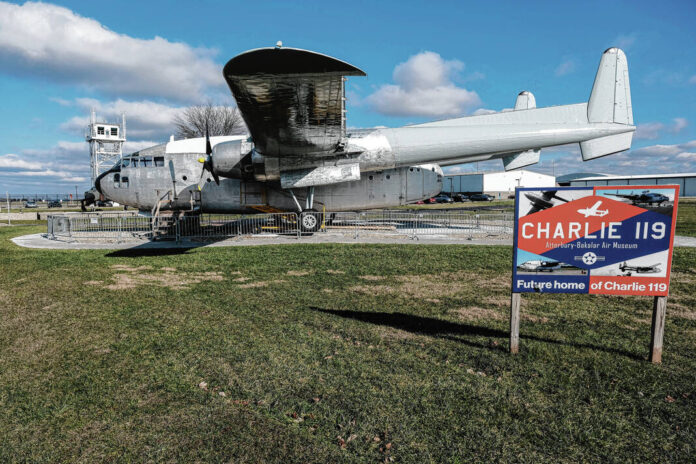
Mike Wolanin | The Republic A view of the C-119 at the Atterbury-Bakalar Air Museum and Columbus Municipal Airport in Columbus, Ind., Monday, Jan. 4, 2022.
The Atterbury-Bakalar Air Museum is hosting an open house for its C-119 in honor of Veterans Day.
The open house will be from 3 to 5 p.m. today. Atterbury-Bakalar Air Museum President Nick Firestone said that the air museum will be open from 10 a.m. to 5 p.m., closing an hour later than usual. Admission is free, though donations are welcomed.
“Come and see what the museum’s restoration crew has accomplished with Charlie 119, which is now known as the city of Columbus,” museum officials said. “After touring the plane, please visit the Atterbury-Bakalar Air Museum across the street.”
The museum purchased the C-119, which is not airworthy, for $15,000 in 2019. It was disassembled over several months at an airport in Greybull, Wyoming, and transported to Columbus in several hundred pieces. Volunteers then worked to reassemble and restore the plane.
There was a formal dedication ceremony in September to celebrate the project, though museum president Nick Firestone noted that there was still more work to do on the plane’s interior and that “just like restoring a classic car, there will always be improvements to be made.”
C-119 aircraft, also known as “Flying Boxcars” due to the unusual shape of their fuselages, were in service with the U.S. Air Force from 1947 to 1972 and were designed to carry cargo, personnel, litter patients and mechanized equipment. The aircraft was also used to drop cargo and troops using parachutes, according to the Strategic Air Command and Aerospace Museum.
C-119 aircraft played a major role in Bartholomew County history during the era when Bakalar Air Force Base (1942-1970) was located where Columbus Municipal Airport now stands.
During the 12 years before it closed, there were three dozen C-119s stationed at the U.S. air base. At that time, Columbus residents saw more Flying Boxcars flying above their heads than any other aircraft. Pilots referred to the planes as the “Dollar Nineteens,” according to museum records.




